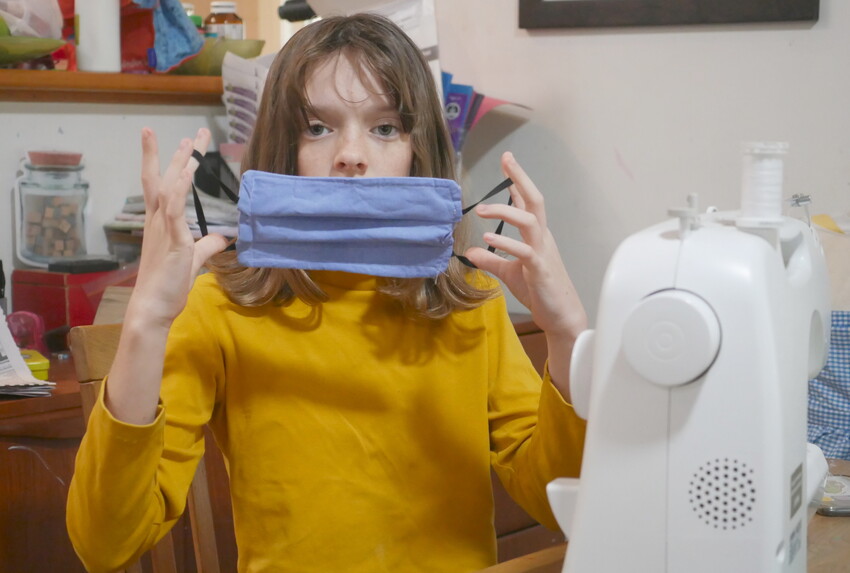
An effortless transition to online learning for students and parents
It has been well documented that adolescents are more affected than other age groups in terms of distress following episodes or periods of adversity. This makes students vulnerable to potentially ongoing depression and anxiety. Research suggests that observing their parents’ adverse reaction to a situation can intensify the level of stress and trauma experienced. It is therefore essential that a parent’s approach to supporting their children is both positive and constructive.
Students enrolled at schools using Big Picture Design for Learning participate in a truly learner centred setting. The Learning Design has allowed effective transition for students to an online environment. Students from Cooks Hill have agreed they “have an advantage being a part of Big Picture because I enjoy what I’m doing and what I’m learning so I can get through the setbacks quite easily“. Each advisor has only 17 students and maintains close communication with each of them as they continue with their work. This relationship allows students to remain engaged with their learning and connected to their advisory. Furthermore, as it is favourable to resist introducing unnecessary changes during this time, a design for learning requiring minimal modifications is most beneficial.
However, for many students in mainstream education, the transition to online learning has not been so smooth. Focus has remained on content, with changes only in the mode of delivery – emergency remote learning if you like. During these times it is not possible to absolutely replicate a normal school day and it is best not to try and do this. The Department of Education has provided guidelines to parents. For parents, it is important to remember what their role is at this time. Important things for parents to consider are:
- Focus on maintaining an emotional connection with your child. As one student from Bunbury states “Now that I’m with my family I have been able to help them, and they have been able to help me it has been very good”. Be kind to yourselves and your family.
- Parental involvement is crucial when Learning from Home. Make sure you communicate any concerns regarding your child with their teacher or school. Parents of Big Picture students are actively involved in their child’s education and the established lines of communication between advisors and parents have been important during this time.
- Ensure your child has set up suitable space for learning. Students need to be organised and prepared to learn independently.
- Check what the learning expectations are during this time. Ensure these are reasonable and use your own judgement to create a balance between achieving learning outcomes and well being. Again, communicate with teachers and schools if workloads are too demanding in terms of timeframes and content and negotiate more realistic possibilities. Remember, this is a new scenario for teachers and schools as well.
- Keep students engaged by creating learning opportunities around passion. Big Picture Education Australia has developed a strategy for students to create an unlimited number of Passion Projects that use Big Picture Design, for personalised learning tasks for students in mainstream schools. This is an opportunity to look beyond the embedded curriculum during this unprecedented time in history. Big Picture students have found “staying at home is a great chance to learn new things and set goals, that I felt like I've never fully been able to do before”.
BP design for learning encompasses all of the above. Personalised learning experiences are aligned with student interests and each student is responsible for their learning in a supportive and inclusive community. The learning design, focussed on student passion, has been completely transferable ensuring both learning progress and well being of each student. Students “are content, the self-directed BP learning style is very compatible with home learning as it doesn’t require constant input from teachers”. Early indications are that the majority of students in Big Picture academies remain organised, prepared and engaged and are effectively developing strategies to deal with the challenges associated with physical isolation. Students “feel like these changes are needed for what’s happening, so I’m not complaining”.
Finally, keep in mind it is OK to stop, for any reason, if you need to. The five ways to well being identify simple strategies for psychological and emotional health, comprised of connect, be active, keep learning, be aware and help others. Students from Esperance have noted “learning from home is working to my advantage being a big picture student, I still have leisure times as well as work times”. It is hoped that the current situation will highlight yet again the positive contribution Big Picture Design for Learning can make in mainstream education settings. We are currently monitoring and evaluating our students and advisors through ongoing surveys to highlight the personalised learning, engagement and well being practices already in place in the Design. This will provide the opportunity to take full advantage of the positive experiences associated with the Design post COVID-19.
Dr Deborah Chadwick
Education Consultant
on behalf of Big Picture Education Australia
